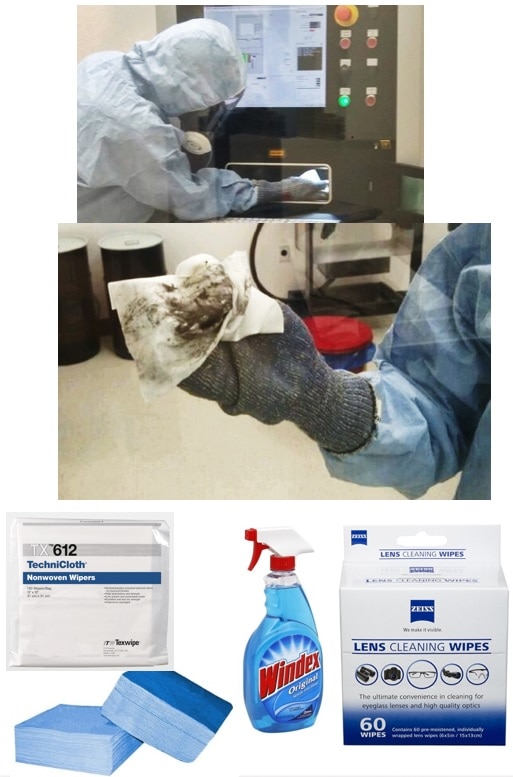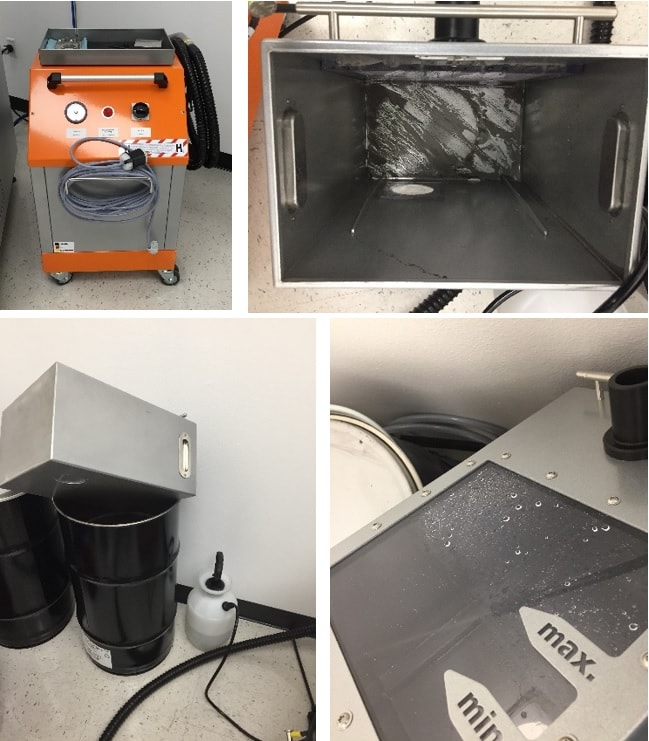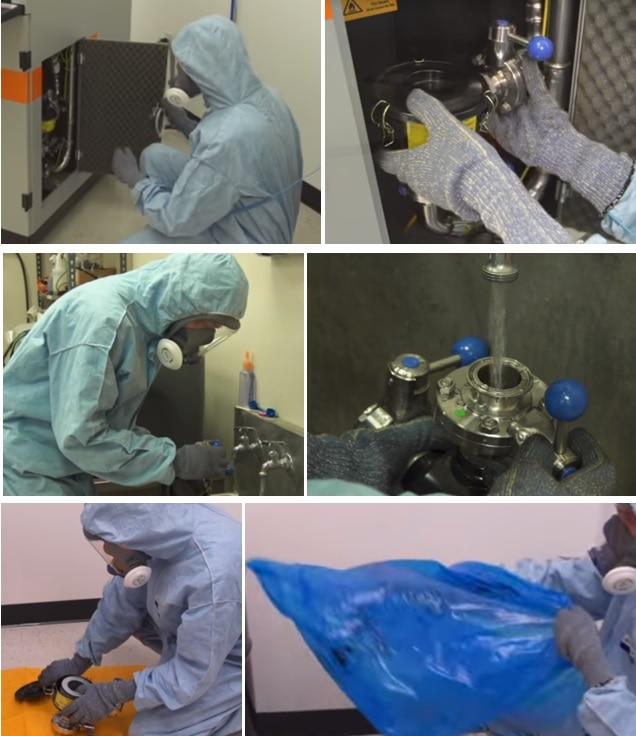After installing our first Laser Powder Bed Fusion Additive Manufacturing system, we learned a lot, and while he was at PADT, Dhruv Bhate kindly wrote up a series of blog posts on what we learned.
Here are the articles:
If you prefer, you can register for a webinar to be held on July 26, 2017 @ 2pm EDT (US) where I will be summarizing all 5 parts of this blog series. Register by clicking on the image below:
Housekeeping may seem too minor a thing to dedicate a post to, but when it comes to metal 3D printing, this is arguably the single most important thing to do on a regular basis once the equipment, facilities, safety and environmental considerations are addressed up front. In this post, I list some of the activities specific to our Concept Laser MLab Cusing R machine that we do on a routine basis as indicative of the kinds of things that one needs to set aside time to do, in order to maintain a safe working environment. In this post, I break down the housekeeping into the 3D printer, the wet separator and the filter change.
1. The 3D Printer
All 3D printers need to be routinely cleaned, but for powder based metal 3D printers, this needs to be done after every build. Three steps need to be performed during cleaning of the printer:
- Powder Retrieval: After the build, the powder is either still in the dose/feed chamber or not. All powder that is not in the dose chamber needs to be brushed to the overflow chamber for recycling. While it is possible to vacuum this powder, that is not recommended since it results in greater loss of powder and also increases the burden on cleaning the vacuum and creating wet waste.
- Process Chamber Cleaning: The process chamber after a build gets covered with fine combustion particles (soot) that need to be wiped away, as shown in Figure 1. The recommendation is to do this cleaning using lint-free or clean room wipes moistened with an ammonia based cleaner like Windex Original.
- Lens Cleaning: Special lens cleaning wipes are to be used to clean the protective lens that separates the chamber from the laser. Standard lens cleaning wipes can be used for this, in a gentle single-pass movement.
It is important to wear appropriate PPE and also NOT contaminate the lens. Improper or irregular cleaning will result in soot particles interfering in subsequent builds. Soot particles can occasionally seen in subsequent builds especially when the inert gas and the ventilator (circulating fan) are turned on – this is more likely to happen if the chamber is not routinely and properly cleaned.

2. Wet Separator
The wet separator (vacuum) sucks up stray powder and suspends it in a water column. The metal particles will descend to the bottom of the water column (as shown in Figure 2) and need to be routinely cleaned out. This cleaning procedure is recommended daily for reactive metals – failing this, the metal particles will weld themselves to the metal container and prove to be very difficult to scrape out. For non-reactive metals, a daily flush may be excessive (since this will add to the cost in terms of labor and disposal) and a weekly routine may be preferable for a wet separator that serves 1-2 machines.
To reduce the water needed to flush out the powder sludge at the bottom, a standard pump sprayer is very effective. Further reduction in water usage and disposal can be achieved by a filtration device such as the one developed by the folks at Kinetic Filtration.

3. Filter Change
Filters need to be changed periodically as shown in Figure 3. A video below (set to start at the 2:58 mark) shows how the filter change is performed for our MLab, for a non-reactive metal, so I shall not describe the procedure further. A reactive metal alloy filter needs to be stored in water to passivate it at all times, even through disposal. Other OEMs recommend sand and other materials, so it is important to follow the specific instructions provided by your supplier for passivation.

Summary
Good housekeeping for metal 3D printing is vital and more than just aesthetic – there is a modest chance that failing to follow your supplier’s instructions on one or more of the items above will result in a safety incident. This is especially true for reactive alloys, where filter changes are recommended after each build and wet separator clean on a daily basis.
Disclaimers
- This is intended to supplement the supplier training you must receive before using the equipment and not meant to replace it – in case of conflicting information, your supplier’s training and equipment requirements override any discussion here. PADT and the author assume no legal responsibilities for any decisions or actions taken by the readers of this document.
- My personal experience derives specifically from the use of Laser-based metal 3D printing tools, specifically Concept Laser’s MLab Cusing R equipment. I expect majority of this information to be of use to users of other laser based powder bed fusion metal systems and to a lesser extent to Electron Beam systems, but have no personal experience to vouch for this.
~
Final Thoughts
This concludes my 5-part post on what we learned installing a metal 3D printer. If you have any thoughts on the content or would like to discuss this subject further, please let me know by messaging me on LinkedIn or by sending an email to info@padtinc.com, citing this blog post. I will be happy to include any suggestions in my posts with due credit.
Thank you for reading – I hope this has added value to the discussion on safely and effectively advancing metal 3D printing technology.
Continue Reading:



















